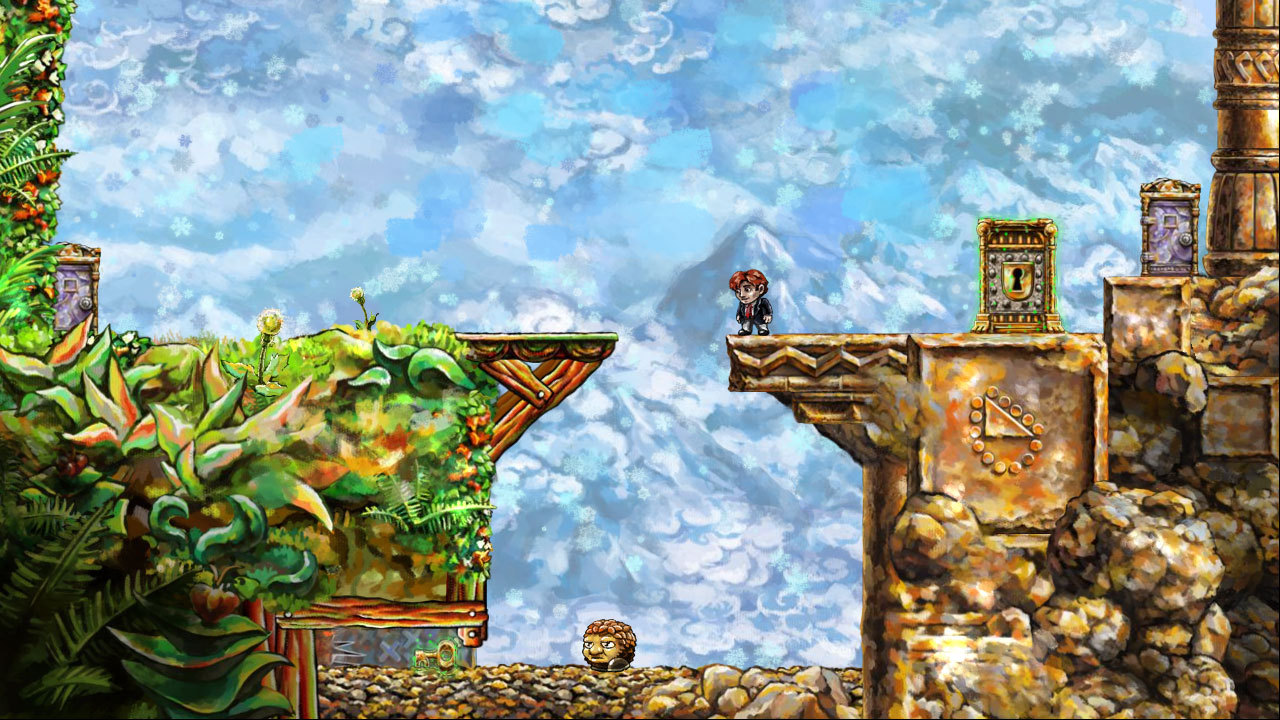Braid – Game Review
Ever made a mistake you wish you hadn’t? Of course you have… everyone has. Ever wish you could go back in time and pretend that mistake never happened? Or would you rather learn from that mistake and continue forward, all the wiser? In Braid, a game released back in 2008 by indie developer Jonathan Blow, you follow a man named Tim in his struggles to grasp this concept and come to terms with the mistake he made that separated him from his Princess.
Braid: A Puzzle Adventure
Braid is a 2D puzzle platform game that uses time manipulation as its main gameplay element. The game is split into five worlds, each with a different way of manipulating time and space in the world around you. The story is told via books at the beginning of each level and with an image that you must put together from puzzle pieces found in each world. If all the images are created, a sixth and final world opens up that presents the true ending to Tim’s tale.
Now first and foremost, Braid is a very pretty game. The artwork and all the objects that inhabit each world look hand-drawn and are truly stunning. Tim is supposed to be this “Average Joe” with a troubled relationship and he looks the part, right down to his disheveled tie. Each world has a unique theme and the each environment reflects the theme. It’s a game you can simply wander through and marvel at all the little details.
Each world is also distinctive in that there is a different time manipulating concept that must be used in order to complete the level. In one world, certain parts of the environment continue to move forward, even when time is being reversed. In another world, having Tim move to the right causes time to move forward, while having Tim move to the left causes time to move backward. You must use these concepts to retrieve keys that open previously locked doors, protect yourself from environmental hazards, and defeat bosses that guard the exits to the worlds.
Having a basic understanding of the various elements will allow you to complete each level, but you won’t truly master it until you are able to collect all of the various puzzle pieces found throughout the game. There are fourteen puzzle pieces in each world and when fully assembled, they provide a snapshot of Tim’s relationship with the Princess. And when I say master, I really do mean master. Most of the early puzzle pieces can be acquired after a few minutes of trial and error, but the last couple of worlds can be mind-boggling. With so many moving platforms and enemies to consider, you almost have to watch everything in motion and then restart before attempting to solve a particular puzzle. However, since you cannot die in the game (reverse! reverse!), it never becomes overly frustrating. You can try and try again until the solution is achieved.
It is definitely worth finding all the puzzle pieces, as the full story cannot be told until they are all found and the sixth world is unlocked. The story itself is told by reading excerpts from books found at the beginning of each level. A few critics have said that this is just lazy storytelling, but I think it fits fairly well within the game. Each world has its own theme and thus a different concept (i.e. Time and Forgiveness, Time and Mystery) is applied to Tim’s story. You get a different way of looking at Tim’s plight, and as you progress further through the game, you almost feel like you’re inside his head while he works out his issues and searches for his Princess. The ending is purposely ambiguous, leaving you to determine if Tim succeeded or not.
Braid was released almost five years ago, but it is still a wonderful game. It’s beautiful, challenging, and emotionally rewarding to those who can relate to Tim’s story. The puzzles can certainly be challenging, but they are never difficult to the point of frustration. The answer is there to those who persevere… it just takes a little time.

